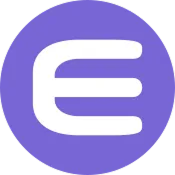In the rapidly advancing universe of blockchain technology, two platforms stand out for their unique approaches to scalability and asset management: Polygon, aiming to be the internet's value layer with its sophisticated protocol architecture, and Enjin, dedicated to revolutionizing gaming and NFT ecosystems through specialized blockchain solutions. While Polygon offers a multi-layered, zk-proof-enhanced environment designed for high throughput and interoperability, Enjin focuses on providing a seamless, NFT-centric infrastructure tailored for gaming applications. This blog delves into the technical nuances, architectural designs, and ecosystem strengths of both platforms, offering crypto enthusiasts and investors an in-depth comparison to inform strategic decisions.
Short on time? Jump to Polygon vs Enjin Comparison
Understanding Polygon and Enjin ?
Polygon is a multi-faceted blockchain platform that aims to address Ethereum's scalability issues by providing a multi-layered architecture featuring the Ethereum layer, Heimdall proof-of-stake layer, and Bor block production layer. Its recent evolution with Polygon 2.0 introduces a protocol designed for unlimited scalability and unified liquidity, positioning itself as the 'Value Layer of the Internet'. This architecture combines traditional execution layers with advanced zero-knowledge (ZK) proof protocols, enabling high-performance validation and cross-chain communication.
Enjin, by contrast, is tailored for the gaming and NFT markets, emphasizing ease of integration, high transaction throughput, and on-chain asset management. Its blockchain infrastructure comprises the Enjin Relaychain, which provides security, and the Matrixchain, optimized for NFTs with features like managed wallets, royalties, and metadata. Powered by a nominated proof-of-stake consensus, Enjin is designed to support gaming ecosystems with rapid, low-cost transactions and robust asset interoperability.
Polygon’s architecture leverages zkEVM and recursive SNARKs to enhance proof efficiency, enabling scalable cross-chain interactions and complex smart contract execution. Its infrastructure supports over 19,000 dApps, including DeFi protocols and NFT marketplaces, making it a versatile platform for developers seeking high scalability and security.
Enjin’s blockchain, built on a Substrate architecture, integrates NFT-specific functionalities directly into its protocol, facilitating seamless in-game asset creation, trading, and management. Its focus on user-friendly SDKs and APIs ensures that developers can rapidly deploy NFT projects, bridging the gap between blockchain technology and mainstream gaming audiences.
Key Differences Between Polygon and Enjin
Architectural Focus
- Polygon: Polygon's architecture is designed as a comprehensive, multi-layered environment supporting a vast ecosystem of dApps, with advanced zk-proofs and cross-chain capabilities. Its protocol architecture emphasizes elasticity, scalability, and interoperability across multiple chains, making it suitable for diverse decentralized applications beyond gaming.
- Enjin: Enjin’s architecture is purpose-built for NFTs and gaming assets, featuring a specialized relay and matrix chain structure optimized for rapid, low-cost transactions and seamless integration with gaming engines. Its focus is on asset management, user experience, and community-driven governance within a niche ecosystem.
Consensus Mechanism
- Polygon: Polygon employs a modified proof-of-stake consensus with validators staking POL tokens, combined with zkEVM and recursive SNARKs for proof generation, enabling secure, scalable validation across multiple chains and layers.
- Enjin: Enjin utilizes a nominated proof-of-stake (NPoS) consensus on its relay chain, allowing ENJ token holders to participate in staking, securing the network while maintaining a decentralized governance model tailored for NFT and gaming assets.
Primary Use Cases
- Polygon: Polygon aims to serve as a universal Layer 2 solution, supporting DeFi, NFTs, gaming, and enterprise applications through its scalable, interoperable infrastructure.
- Enjin: Enjin is dedicated to gaming and digital asset management, providing tools to create, trade, and manage NFTs within games, virtual worlds, and digital collectibles platforms.
Ecosystem and Adoption
- Polygon: Polygon boasts an extensive ecosystem with over 19,000 dApps, partnerships with major corporations, and ongoing protocol innovations like AggLayer for ZK-proof aggregation, positioning it as a versatile blockchain platform.
- Enjin: Enjin’s ecosystem is focused on gaming studios, developers, and NFT communities, with integrations into popular game engines and a suite of SDKs designed for easy onboarding and asset interoperability.
Transaction Capabilities
- Polygon: Polygon supports high throughput with zkEVM integration, enabling efficient proof generation and cross-chain communication, with plans for unlimited scalability through Polygon 2.0.
- Enjin: Enjin supports over 5,000 transactions per second, with features like managed wallets, on-chain metadata, and low transaction fees optimized for gaming assets.
Polygon vs Enjin Comparison
| Feature | ✅ Polygon | ✅ Enjin |
|---|---|---|
| Transaction Speed | Up to 19,000+ TPS with zkEVM integration | Over 5,000 TPS |
| Consensus Model | Modified proof-of-stake with zk-proofs | Nominated proof-of-stake (NPoS) |
| Primary Focus | Scalability, interoperability, cross-chain dApps | NFTs, gaming assets, digital collectibles |
| Ecosystem Size | Over 19,000 dApps, global enterprise adoption | Focused community with SDKs for gaming |
| Main Use Cases | DeFi, enterprise, NFT platforms, Metaverse | Game development, digital asset management |
Ideal For
Choose Polygon: Polygon is ideal for developers and enterprises seeking scalable, interoperable blockchain solutions across various sectors beyond gaming.
Choose Enjin: Enjin is best suited for game developers, NFT artists, and communities focused on digital asset creation and management within gaming environments.
Conclusion: Polygon vs Enjin
Polygon and Enjin exemplify two distinct philosophies within blockchain development: one embracing universal scalability and cross-chain interoperability, the other honing in on specialized NFT and gaming asset functionalities. Polygon’s innovative protocol architecture, especially with Polygon 2.0, positions it as a versatile platform capable of supporting complex dApps, DeFi, and enterprise solutions with high throughput and robust security.
Enjin, on the other hand, excels in providing a tailored ecosystem for gaming and NFT projects, with rapid transaction speeds, seamless integration, and community-centric governance. For developers and investors primarily interested in gaming assets and NFTs, Enjin offers a compelling, purpose-built environment. Ultimately, the choice hinges on whether one values broad interoperability and scalability or specialized asset management within gaming ecosystems.






